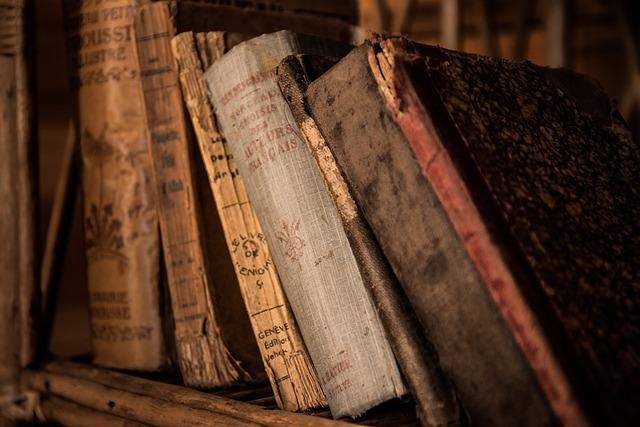In the quiet corners of our homes, often tucked away in dusty attics or forgotten drawers, lie the whispers of our past—birth certificates browned by time, letters penned with love and longing, and photographs that capture the essence of generations gone by. These family history documents and records are not just papers; they are the threads that weave the rich tapestry of our heritage. Yet, the task of organizing these cherished remnants can feel as daunting as deciphering an ancient language. Fear not, for you are not alone in this journey. Together, we will embark on a heartfelt exploration of how to bring order to this beautiful chaos, ensuring that the stories of your ancestors are preserved with care and reverence. With empathy as our guide, let’s transform this overwhelming task into a meaningful voyage of discovery and connection, bridging the past with the present, and honoring those who came before us.
Unearthing Ancestral Gems: A Journey into Family History
Embarking on a journey into your family history is akin to opening a treasure chest filled with stories waiting to be told. However, the key to unlocking these tales lies in effectively organizing your documents and records. Start by categorizing everything into birth certificates, marriage licenses, death records, and census data. This method not only simplifies your search but also provides a clear path through the intricate maze of ancestral connections.
- Create a digital archive: Scan and store documents in cloud storage or a dedicated genealogy software.
- Label meticulously: Use descriptive filenames and tags to make retrieval a breeze.
- Develop a timeline: Arrange records chronologically to weave a coherent family narrative.
- Preserve physical copies: Use acid-free folders and boxes to protect original documents from degradation.
With these steps, you’ll transform a jumble of papers into a well-organized library of family history, allowing you to delve into your past with clarity and confidence.

Crafting the Perfect Archive: Tools and Tips for Document Preservation
Embarking on the journey of organizing family history documents can feel like piecing together a cherished puzzle of the past. To maintain the integrity and accessibility of these precious records, it’s essential to approach the task with both creativity and care. Begin by gathering all available documents, such as birth certificates, marriage licenses, letters, and photographs. Next, categorize these items into groups based on family branches or document types. This method not only enhances the clarity of your collection but also reveals fascinating patterns and connections that might otherwise go unnoticed.
Consider employing a mix of traditional and digital tools to preserve and organize these memories. Archival-quality storage boxes and acid-free folders are excellent for physical documents, while scanning and digitizing ensures their longevity in the digital realm. Utilize tools like genealogy software or online family tree platforms to create a dynamic and interactive family archive. Remember to label everything meticulously, using names, dates, and locations to provide context. By taking these thoughtful steps, you create a living tapestry of family history that can be shared and cherished by future generations.
- Gather all family documents
- Categorize by family branch or document type
- Use archival-quality storage for physical documents
- Digitize records for easy access and sharing
- Label everything with clear, detailed information
- Consider genealogy software for a comprehensive archive

Connecting the Dots: Building a Family Tree with Precision
Embarking on the journey to construct your family tree is akin to piecing together an intricate puzzle, where each document is a vital fragment of your heritage. To ensure precision, it’s essential to develop a system that respects both the emotional significance and the historical value of these documents. Begin by categorizing records into birth certificates, marriage licenses, census records, and personal letters. Utilize color-coded folders or digital tags to differentiate these categories, making retrieval a breeze when you need to trace back a lineage or verify a date.
- Digitize Everything: Transform physical documents into digital files to preserve them against time and natural decay.
- Label with Care: Include names, dates, and locations on each file to provide context and clarity.
- Create a Master Index: Develop a searchable database or spreadsheet that acts as a central repository for all document details.
With each document you organize, you’re not just preserving history; you’re weaving the tapestry of your family’s narrative with care and respect. As you progress, remember that each record is a testament to the lives lived and the stories yet to be discovered.

Sharing Stories: Turning Records into Family Narratives
Organizing family history documents can feel like assembling a complex puzzle, yet it’s a deeply rewarding endeavor that breathes life into ancestral tales. Start by gathering all your documents in one place and sorting them into categories such as birth, marriage, and death records. Digitize these documents to preserve them and make sharing easier. Create a system that resonates with your family’s unique story, perhaps organizing by family branch or by chronological order, allowing each document to unfold like chapters in a narrative.
Consider using a color-coded system to distinguish between different branches of the family tree. Utilize tools such as acid-free folders and archival boxes to protect your precious records. Maintain a digital backup using cloud storage or specialized genealogy software. As you organize, keep an eye out for connections and themes that can weave these documents into a compelling narrative. With each step, you’re not just organizing papers; you’re crafting a living, breathing family saga that connects past generations with the present.


